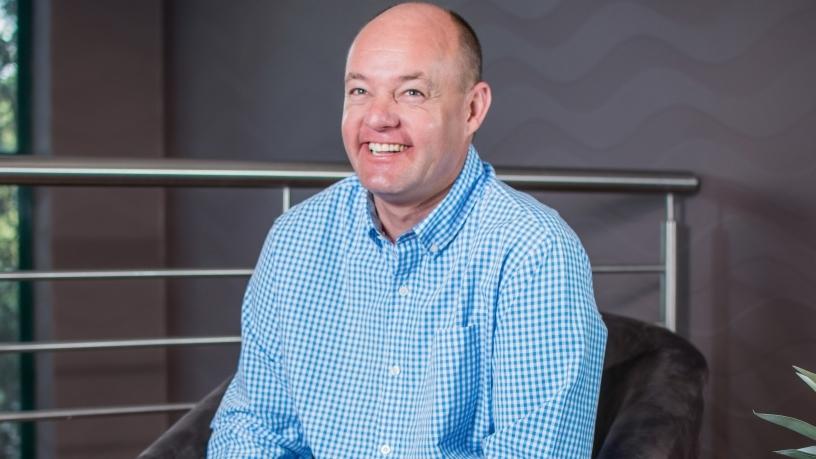
Integrated ICT and infrastructure provider and telecoms company, Vox, is going big on the Internet of things (IOT) and is targeting the agricultural sector as a major customer base.
This is according to CEO Jacques du Toit, who told ITWeb in an interview that the company aims to have a million connected IOT devices in the first year.
Agriculture is one of three key areas Vox will focus on for its IOT offerings; the other two being utilities and on-board diagnostics (OBD) for the automobile industry.
"The hardware we source worldwide is fit for purpose, the network is deployed by Sqwidnet with Sigfox technology or LoRa which we can do on our own, and then the applications we build ourselves," he says.
Vox's IOT offering officially launched on 23 March and Du Toit is now on a roadshow talking to agricultural groups to get them on board. Vox is developing IOT solutions, including soil moisture detection, water meters, animal tracking, asset tracking and security services.
"Most SA farmers haven't been exposed to technology in the same way European farmers have been, but that is changing. We believe farmers are getting more educated in terms of technology. They are happy to go and farm behind a PC and not sit on the tractor the whole day anymore. For them, it's about improving efficiencies and productivity, creating a better environment and bringing the cost down, and the only way you can do it is with technology."
The prospects of IOT in agriculture have been a discussion point for many years but Du Toit says Vox is making this a reality with applications that are ready to run, including a simple gate sensor for farmers.
"We have taken a tamper device that was manufactured for manhole covers and modified it slightly. So it sits on a gate or the door to a shed, and if the gate opens all it does is picks up movement and sends an alert. So if you imagine a 50 000-hectare farm, how many gates are on a farm like that? Farmers don't know when someone is going through a gate to steal their livestock or coming in to murder them.
"At the moment, there is no way that is being monitored because there is maybe no electricity, no connectivity but now with IOT if the gate starts moving and it is outside of a specific set time then it alerts the farmer," he explains.
Another IOT device is a water level metering system. "Today the only way a farmer knows if a water trough is full is if they go there. Imagine the money you waste to drive out to look at that trough in the furthest corner of your farm. Now this sensor measures it and if it drops below a certain point it sends you a message."
There is also an animal tracking system, where a collar on a sheep or cow can monitor temperature, how many hours the animal has been active over the last 24 hours, and the distance it has walked. A specific animal can also be geo-fenced, with a notification sent as soon as it moves outside a certain area.
Via temperature monitoring, it has the ability to give a farmer an early warning if an animal is getting sick, and behaviour tracking can detect if something is wrong.
He says usually the collar will gather data and update 50 times a day, but that can be changed depending on what the farmer wants. The collars have extensive battery life and if the device updates 50 times a day the battery will last about a year, or if it updates just once a day the farmer can get seven years out of the battery.
Du Toit is this month heading off on a roadshow, doing Senwes, WRSA (Wildlife Ranching South Africa) and Laeveld Agrochem workshops, and says the group is targeting 2 500 farmers. He believes the workshops will also help Vox to better understand exactly what solutions farmers are looking for so it can customise and build them.
IOT uprising
Du Toit truly believes the IOT revolution is coming. "The market is still in a very na"ive state; the penetration levels are low, but we can make a big difference and there is massive opportunity.
"If you look at the stack and who makes what kind of money, the first 20% goes to the hardware suppliers and the next layer is the connectivity layer that's 10% or 12% of the total solution. So the balance, the 70% that is left is about the integration, application and platform. If you don't have that you can't really say you have a play in IOT and I think that is where we are positioning ourselves."
He sees an opening in the utility market through early warning leak detection or abuse detection. He says target customers can be any sort of organisation responsible for billing, from municipalities to home owners' associations or estate managers.
Another focus area is the vehicle industry, using a device that is plugged into an OBD port in a car which collects huge data sets which can be used by insurance companies or the car rental industry to completely change their commercial business models.
"I think we are going to help industries be disruptive: insurance, cars, agriculture, security. The biggest thing we need to do is educate people that applications have grown a million-fold. The cost of the hardware is 10% of what it used to be; the cost of the communication is a fraction of what it was. IOT has been around for years, it just used to be called machine-to-machine and now it has become IOT because the cost has fallen through the floor."
Share